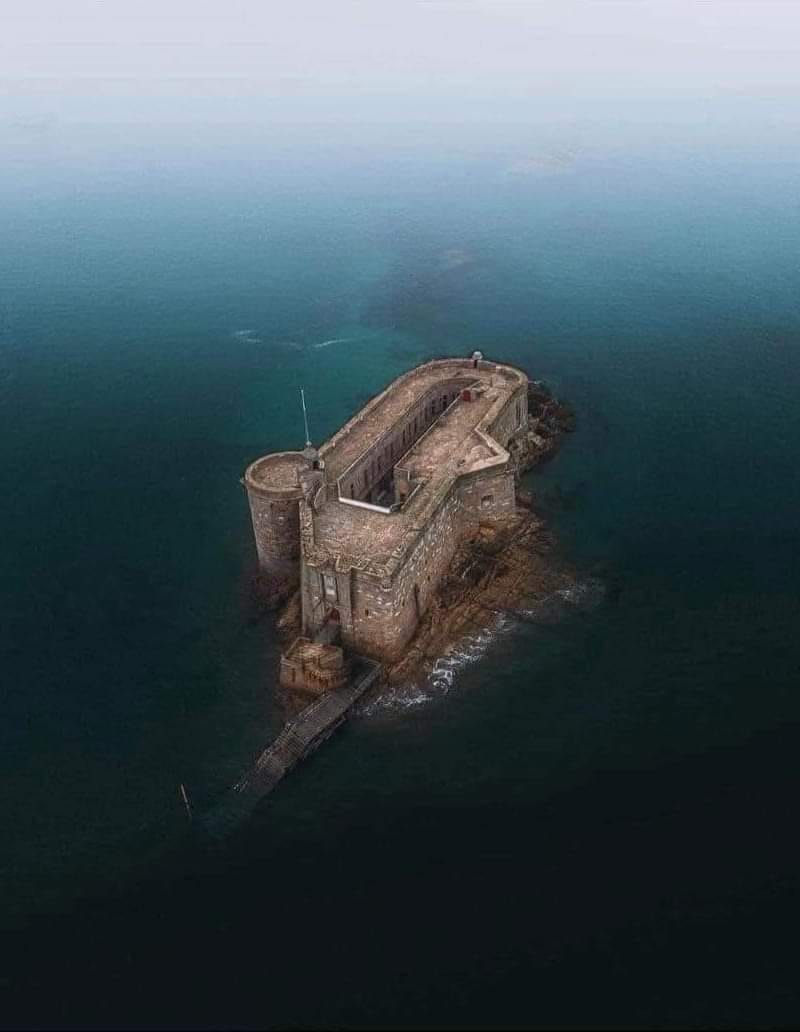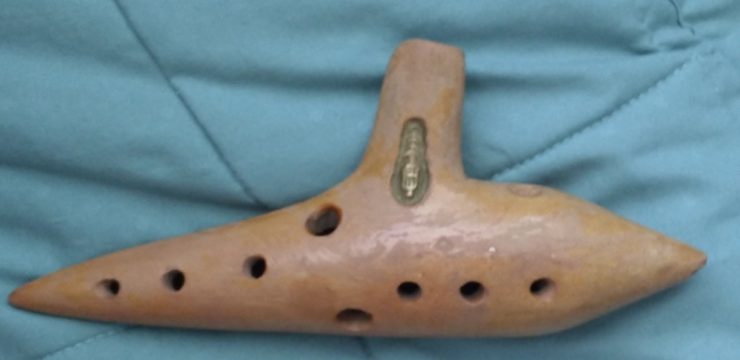The Château du Taureau stands as a breathtaking fortress on an islet in the Bay of Morlaix, Finistère. With a history spanning over four centuries, this remarkable structure has undergone numerous transformations, serving various purposes throughout its existence. Originally built as a defensive stronghold, it later became a state prison, a private retreat, a sailing school, and eventually a historical monument open to the public. Today, it remains a powerful testament to France’s architectural and military legacy.

The origins of the Château du Taureau date back to 1542 when construction began in response to a serious threat. Two decades earlier, in 1522, English forces had advanced up the Dossen River, reaching the heart of the Morlaix estuary and looting the town. To prevent future invasions, the people of Morlaix financed and built a fort at the entrance of the estuary. This early structure, known as the Fort du Taureau, was modest in size, with walls standing at just 6.5 meters in height—half of what they would eventually become.
During the reign of Louis XIII, the governorship of the fort was a highly sought-after position among the Morlaisians, leading to disputes. However, in 1661, under Louis XIV, the French crown claimed ownership of the fort, making it state property. The king transformed it into a military garrison and prison, recognizing its strategic significance due to Brittany’s proximity to England, which often made the region a focal point of European conflicts.
Understanding the need for a more formidable defense, the esteemed military engineer Vauban visited the site in 1680 and ordered extensive renovations. The existing fort was nearly entirely reconstructed, with the exception of the French Tower. Built primarily from granite sourced from the nearby island of Callot, the newly designed structure followed an oblong shape, conforming to the natural contours of the rocky islet. Spanning 60 meters in length and 12 meters in width, with walls rising to a height of 12 meters, the fortress covered a total area of 1,450 square meters. Inside, it housed eleven casemates, each capable of accommodating a cannon. Additionally, it featured living quarters for soldiers and officers, two dungeons, a kitchen and canteen, a chapel, and latrines.
Despite its initial role as a military fortress, the Château du Taureau saw its function change as Morlaix’s fortunes declined. By 1721, it had been converted into a prison, a role it fulfilled for over a century and a half. One of its most notable prisoners was Louis Auguste Blanqui, a revolutionary figure of the Paris Commune, who was incarcerated there in 1871.
By 1890, the fort had lost its military importance and was officially disarmed. Just over two decades later, in 1914, the French government designated it as a historic monument, securing its preservation. However, the 20th century saw further transformations. During the summer of 1930, the Vilmorin family rented the château as a private vacation retreat, taking advantage of its secluded and picturesque location until 1937.
The 1960s saw yet another shift in its function, as the Château du Taureau was transformed into a sailing school. For two decades, it served as a training ground for aspiring sailors, offering a unique educational environment in the heart of the bay. However, by 1982, the sailing school ceased operations, and the fortress fell into a state of disrepair.
By the late 20th century, the château was in urgent need of restoration. Recognizing its historical and cultural significance, both local and national organizations spearheaded a major restoration project in 1998. After six years of careful restoration work, the Château du Taureau was reopened to the public in 2004, allowing visitors to explore its storied halls and experience its rich history firsthand.
Throughout its centuries of existence, the Château du Taureau has played a significant role in shaping the region’s heritage. From its origins as a defensive bastion to its transformation into a prison, a private retreat, and an educational facility, it remains a symbol of resilience and adaptability. Today, it stands proudly as a historic landmark, drawing visitors from all over the world.
A timeline of the Château’s history illustrates its evolution:
- 1542: The first iteration of the Château du Taureau is built by the residents of Morlaix to protect against future invasions.
- 1680: Vauban visits and initiates the reconstruction of the fort, reinforcing its defenses.
- 1745: The fort’s reconstruction is completed, finalizing its current form.
- 1871: The last prisoner, the revolutionary Louis-Auguste Blanqui, is released.
- 1890: The fort is officially disarmed, ending its military role.
- 1914: The French government classifies the château as a historic monument, preserving its legacy.
- 1930: Mélanie de Vilmorin rents the château as a summer residence until 1937.
- 1960: A sailing school is established, utilizing the fort as an instructional site.
- 1982: The sailing school ceases operations, leaving the fort abandoned.
- 1998: Restoration efforts begin to save the decaying structure.
- 2004: The Château du Taureau is reopened to the public, fully restored and recognized as a historic treasure.
Today, the Château du Taureau stands as a cultural and historical gem, attracting visitors from around the world. Its imposing walls, once symbols of military might, now offer a glimpse into the past, telling the stories of those who built, defended, and inhabited it over the centuries. Whether exploring its dungeons, admiring its breathtaking coastal views, or delving into its storied past, visitors are captivated by the unique charm of this fortress in the Bay of Morlaix.





